Items That Require Climate-Controlled Storage
June 3, 2024
Items that require climate-controlled storage! Protecting valuable possessions from excessive temperature fluctuations and excess moisture necessitates climate-controlled storage. As the first line of defense against property damage caused by hot and humid summers and bitterly cold winters, it maintains a constant, moderate temperature and circulates air continuously.
We’ll go through a few of the products that require climate-controlled storage in this post, as well as some advice for assessing whether climate control is the best option for other objects you want to keep.
Whether you collect coins, stamps, sports cards, or something else, storing them in moderate temps will help prevent tarnishing, warping, mold, and mildew caused by exposure to severe outside temperatures. This is an object that must be kept in a climate-controlled environment.
Important documents such as legal documents, medical data, and company forms can all benefit from climate-controlled storage. These objects may become illegible or damaged if they are exposed to too much dampness.
Reserve a climate-controlled storage unit if you’re keeping TVs, computers, video gaming systems, DVD players, or recording equipment to preserve them from harm in extreme temperatures and humidity.
To avoid rotting, warping, discoloration, and mildewing, wood and leather furniture are better candidates for climate-controlled storage. Put important antiques in this climate-controlled group as well, regardless of the material.
Related : How To Choose The Right Storage Unit For Your Furniture
Makeup and toiletries are examples of personal things that should be kept in climate-controlled storage to avoid mildew and spoiling. Before using these things after recovering them from storage, double-check the expiration date.
When exposed to extreme temperatures in the summer and winter, mechanical components in domestic appliances such as refrigerators, microwaves, washers, and dryers are prone to rust, cracking, and other damage. Put this in the climate-controlled storage container.
Most art dealers advise storing artwork in cool temperatures to avoid damage to the frame or the artwork itself. Excess moisture, dry air, and excessive temperatures can cause cracking, warping, discoloration, and other issues that jeopardize the piece’s integrity. Climate control is required for this item.
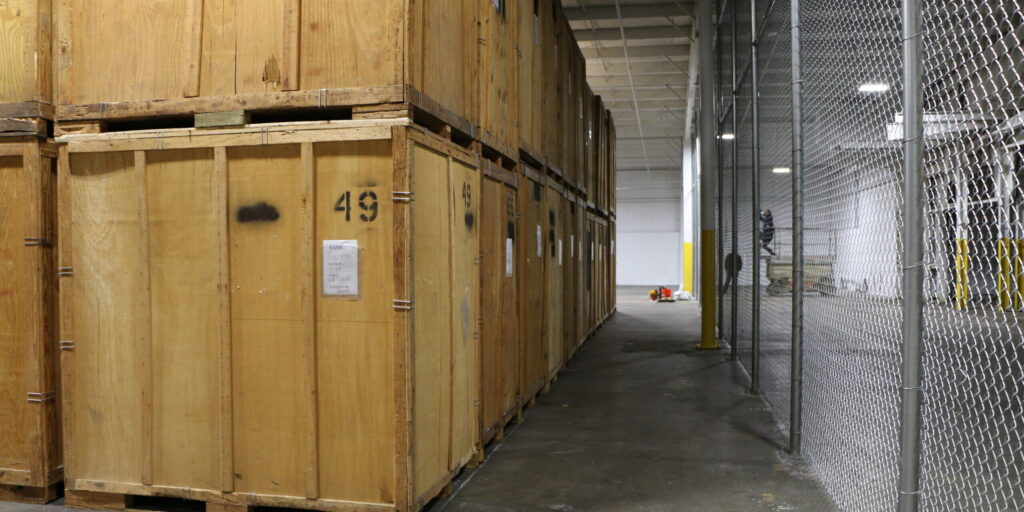
Mold, mildew, and other possible harm can occur when your favorite books and periodicals are exposed to dampness and harsh conditions. The quality of your favorite books can be greatly improved by storing them in a climate-controlled environment.
If you’ve bought water or canned items in preparation for a rainy day or a camping trip, climate-controlled storage can keep them fresh and secure. Another good candidate for this form of storage to help avoid spoilage is wine.
If you have a collection of records, CDs, DVDs, cassettes, videotapes, or any other sort of media, consider storing them in climate-controlled storage until you can meet again.
Snapped guitar strings, fractured or shrunken woodwind instruments, and rusted and bacteria-filled brass instruments can all be avoided with climate-controlled storage.
Choose climate-controlled storage to safeguard your photographs against mildew, discoloration, and other damage caused by moisture and excessive temperatures, whether you’re a photographer or simply enjoy sentimental photographic memories.
The preceding list of objects that need to be stored in a climate-controlled environment is by no means complete. Other personal belongings may require protection from extremes of heat, cold, and humidity. So, how are you going to figure out which objects go where? Use the factors listed below to assist you in making your decision.
If an object qualifies for climate-controlled storage, it must meet the following criteria:
To learn more about climate-controlled storage, contact our experts.
Related Articles:

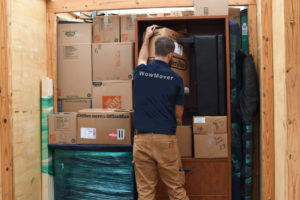


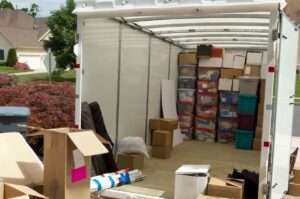

Moving can be an exciting and overwhelming experience. Whether you’re moving locally or long-distance, there are a lot of things to consider and manage during the process. One of the biggest concerns is handling losses or damage during a move. No matter how careful you are, accidents can happen, and items can get lost or damaged. However, with the right preparation and approach, you can minimize the risk of loss or damage and handle it effectively if it does occur.
According to the report, there were 4,100 moving fraud complaints filed in 2017 alone, and counting. If you are getting scammed by a moving company, continue reading below in order to avoid scams and learn how to file a claim against a fraudulent moving company.
Related: The Importance of Reading Moving Reviews
Upon delivery of your shipment, inspect everything while the driver is still there if possible. Note any items that are missing, broken or visually damaged on the bill of lading form before signing. This serves as your notice to the moving company that you are making an official claim for those lost or harmed items right away. Get the driver’s contact information too in case more details are needed later on.
Submit a detailed, signed inventory list of the missing, broken or damaged property within 9 months from delivery date to either your moving company directly or using the Department of Transportation claim form included in your Moving Guide. Describe each item claimed thoroughly along with date and costs estimates for replacement or repair. Attach photos if applicable to support your claim.
The mover will acknowledge receiving your filed claim and may need to analyze and devalue the maximum payout based on the weight and nature of the articles claimed. This fair market value they determine for settlement may be different than your original purchase price. Consider accepting a lower devaluation or counter with proper documentation and receipts when reasonable.
Your mover has 60 days to investigate your filed claim and may need to contact you to arrange an inspection of the damaged items or follow up on details of what transpired during transit. Make sure to promptly respond to inquiries and schedule visits to avoid delaying reimbursement processing timeframes. Provide any receipts, estimates or photos requested to help substantiate your monetary loss claim.
Once the claim investigation concludes, the mover will either make you a reimbursement offer to settle fully or partially. If the proposed settlement seems unfairly low compared to documented expenses, you can appeal their decision within 9 months of delivery through mediation. The American Moving and Storage Association provides binding arbitration services to help navigate disputes between shippers and movers.
Upon acceptance of any settlement agreement proposed by your mover or mediated by AMAS arbitration, expect to receive full reimbursement for agreed upon damages and losses within 60 days. If issues persist, you may need to contact your local consumer protection agencies, file a complaint with the Federal Motor Carrier Safety Administration (FMCSA) or consider pursuing further legal action through small claims court as a last resort to recover losses.
To maximize your chances of success at receiving reimbursement for lost or damaged goods from movers, documentation is key throughout the entire claims process:
Settlement offers from movers are often less than full retail prices when considering the following circumstances:
My advice is to be reasonable, keep receipts and accept small claims decisions gracefully whenever possible to maintain goodwill with movers for future reference. Litigation should always remain an last resort option.
While preparation unfortunately can’t eliminate all risks, taking proactive steps like these can better position you to file strong moving damage claims promptly if needed:
With diligent organization, paperwork and readily available evidence, the claims procedure stands the best shot at achieving maximum reimbursement for any moving mishaps in a reasonable manner without needing lengthy mediations or lawsuits.
Consider these steps to avoid getting scammed by a moving company.
A simple Google search is not enough! There are a lot of fake reviews out there that make the fake company look good. Go ahead to Yelp or the Better Business Bureau website, see if there are customer complaints, and cases against the company, and see if there are service ratings.
Ask for quotations or estimates, and professional moving companies will send you personnel for on-site inspections. By this, you have a much clearer idea of cost so you can set your proper budget to stick with. They are obligated to give you a document “Your Rights and Responsibilities When You Move”.
Ask everything you need to know, ask them if it’s calculated by volume or weight. Do they have a worker to do the packing or unloading of your belongings? If possible do it by yourself to lessen your expenses. Avoid those hidden fees ask them if there is an additional fee for the driver or packing materials. ( Also, Read Why It Is Very Important to Ask for Moving Quotes )
Upon receiving the written estimation, review it thoroughly. If all goes well and you find the best interstate movers, Prepare for your next move!






Portable storage containers have gotten extremely mainstream. It has made moving simpler and there are loads of alternatives for storage. Here are a few hints for packing and best uses for portable storage.
When packing portable storage make certain to have the correct tools to guarantee that the activity is easy and safe. You should have a cart to move hefty things and loading straps and ties, paper cushions, furniture pads, and a stretch wrap to help keep things secured and free from harm.
Second to this is utilizing portable storage for moving. Numerous storage containers are sufficiently enormous to fit a whole family unit of furniture and things depending upon the size of your home. This makes moving substantially more convenient and reduces a great deal of work from moving all around. It is less expensive, adaptable to plans and schedules, secure, and safe.
Numerous regional jobs, similar to construction and landscaping or home finishing, require a ton of moving around. This implies gears and equipment must be moved here and there and also put away when not being used. Numerous companies have found the cost-effectiveness of using portable storage of storing gear nearby and afterward having it delivered to the place of work when required.
Also, Read: How to pack dining room chairs and tables when moving?
One of the most well-known utilizations for portable containers is the temporary source of additional storage. Homeowners can lease a storage container to be brought to their property for a while rather than leasing a storeroom far away or purchasing a permanent building.
These can be utilized for an assortment of reasons, including room redesigns, cleaning up, setting up the house available to be purchased, or home damages fixes. When the undertaking is finished, the storage company will have the container taken out. In the event that the storage container has a plastic or clear rooftop and will be outside for a long time, cover the items inside with cardboard to secure them from exposure.
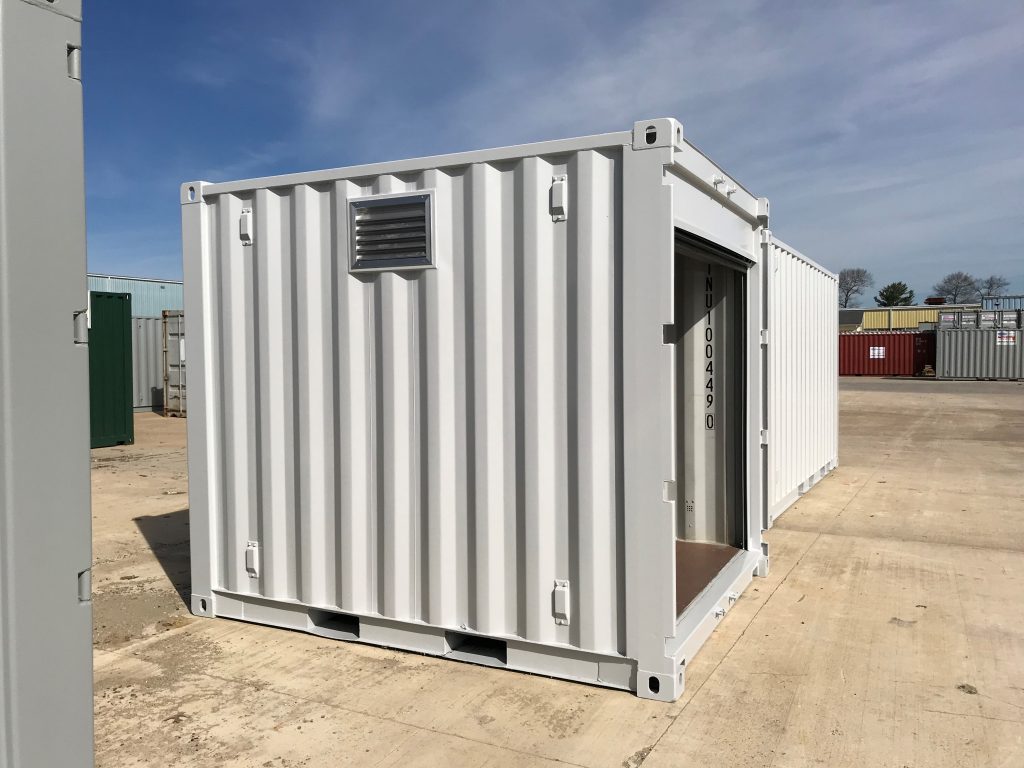
When loading items, the heaviest and bulkiest like fridges, couches, or washers and dryers, should be stacked first. At that point occupy in the spaces between the bigger items with packed boxes. This includes dependability and reduces the danger of bigger items sliding around. Be aware of weight dispersion all through the container.
Also Read: Things to Consider Before Leasing a Storage Warehouse
Be aware of weight dissemination all through the compartment spreading weight evenly end to end and side to side. Balance hefty things and pack heavy boxes on the base. Use loading straps or lashes at each point to secure things yet be mindful not to fix the ties too tightly.
Call WowMovers or fill out our online form to receive a free estimate for our portable storage containers!
Related Articles:






Except if you’re a part of a big organization, odds are you’ll lease your storage space, not own it. Also, when you search for warehouse space to begin putting away your item, it appears as though most distribution centers are designed for big businesses that need delivery and logistics.
In case you’re an small independent company, this presumably doesn’t portray your circumstance. You likely need something littler with greater adaptability. Before you pull the trigger and lease a warehouse, here are some interesting to consider
Another key consideration is the availability of your warehouse storage room. You’ll frequently be informed that your stockroom ought to oblige the parking of a 16 wheeler truck. In case you’re a small independent company, odds are you won’t be working with shipping and trucking companies to pull your merchandise. Rather, focus on the room you need. Do you just need parking? Will you need back a van or truck up to space? Would you like someplace you can pull in to maintain a strategic distance from the cold?
Another inquiry of availability is whether you intend to work out of the warehouse. Do you envision working in the warehouse storage center for a couple of hours every week? You should seriously think about including more space.
Also Read : The Ultimate Guide to Storage Unit in 2020
Will the heat, cold, or moistness affects your item? Nothing would be more regrettable than losing all your stock after heat or cold front, or in the event that you live in an especially humid territory. Many warehouse storage spaces don’t offer HVAC systems, or in the event that they do, it’s on a renter-to-renter basis.
In the event that it turns out you do require a type of climate-controlled storage unit, make certain to get some information about the procedure. Some may expect you to install a framework yourself. Others may charge you for the establishment and support. It’s ideal to double-check.
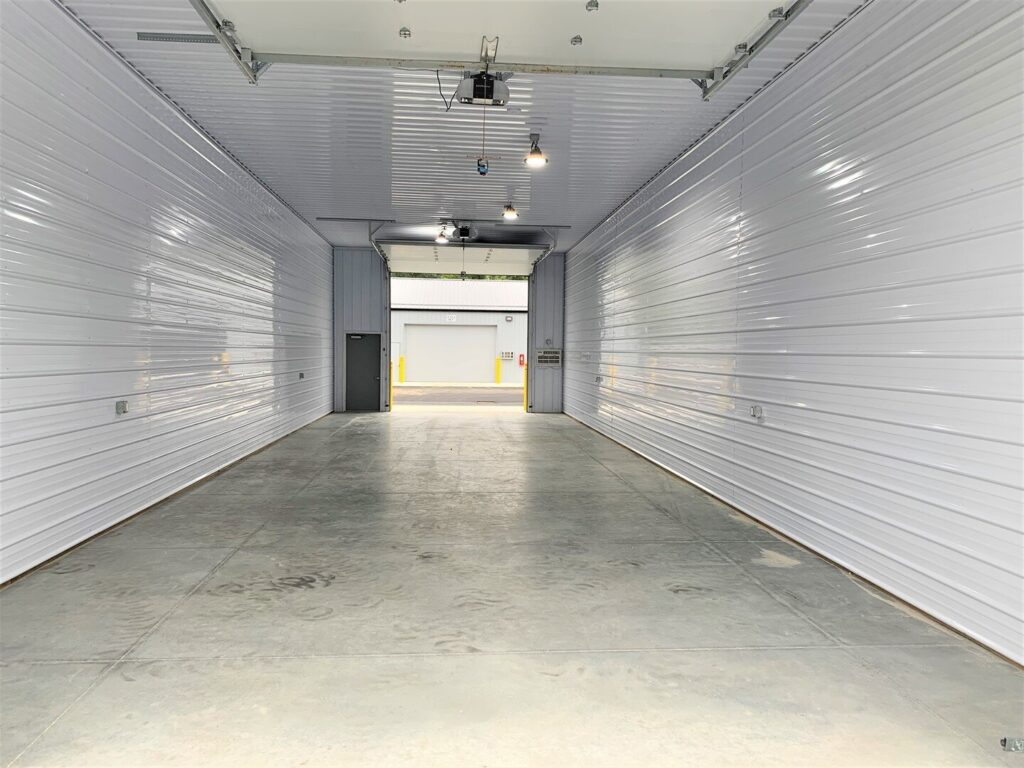
Like the area size, attempting to gauge your rent length can set aside your cash. In the event that you know you’ll just need the space for a couple of months, don’t sign on for a year. See the requirement for a drawn-out responsibility? Try and talk your cost down on the grounds that you’re ensuring a long-term relationship with the property administrator.
Most warehouses centers will attempt to arrange a more drawn-out term, like 5-10 years. In the event that you don’t see yourself focusing on that time allotment, it might be ideal to look for a storage unit that takes into consideration shorter terms, or even month-to-month leasing.
Also Read: What is Short Term Or Temporary Storage?
Make certain to know the estimating benchmarks, too. The normal rental cost was $6.11 per square foot. Notwithstanding, that estimate changed relying on the region. Costs were at $4.75 in the South and $9.28 in the West.
You’ll need to consider who pays for what. In the event that you intend to utilize the space or utilize an HVAC, who pays for the electricity? Besides, in case you’re going to utilize electricity in your space, is the structure prepared to deal with your requirements?
The main thing to consider is the area. How much area of room do you really require for your item? Is it possible to stack your item? What’s more, on the off chance that you don’t have access to forklifts, what amount of space will you have to stock everything within arms reach and at the ground level?
Another consideration with the area is if your current amount will be suitable for several months or a year down the road. It’s ideal to know whether you’re ready to buy more space from your landowner with short notice.
You’ll likewise need to check how the landowner is computing the area. You just need to pay for space you’ll really utilize. For instance, you would prefer not to pay for the dividers as a feature of your square foot value, which, sadly, some landowners will attempt to charge you for.
You additionally need to consider the working, operating, and maintenance costs. Modern rentals don’t care for private residential rentals. The landowner doesn’t consequently pay the tax charges or for maintenance support. Prior to signing the rent, ensure you know your duties.
Related Articles:






Setting off for college will transform yourself in a bigger number of ways than you anticipate. You’ll get familiar with a ton about the world, plan for the workforce, make new companions, and make sense of being a grown-up. You’ll additionally need to figure out how to live with less stuff.
Self stockpiling is an extraordinary alternative for some understudies. Here are seven reasons why we figure you should lease a capacity unit while you’re in school:
Little Living Space
At the point when you head out to school, you’ll either live in a quarter or a mutual condo with different students. In any case, you’ll likely have less room there than you did living at home with your parents. You don’t have to carry all that you own with you, yet you may wind up expecting to acquire more than will fit well your new residence. For most, a 5×5 storage unit is a sufficient space to keep each one of those things you still need, except can’t keep in your dorm or apartment.

Save Cash
We can simply observe the eyebrows raising on this one. In what manner can lease more space set aside your cash? The appropriate response is straightforward. Space in a self-storage unit, even one with atmosphere control, costs less every month than the proportionate measure of private space. You could lease a room in a loft with a 5×5 wardrobe, where you’ll pay $200 more for that space, or you could lease a storage unit, and pay $50 for space. Indeed, costs will fluctuate contingent upon where you live, yet any place that is, the measure of investment funds will be significant.
New Belongings
Throughout your school years, you’ll get more stuff. That implies new books and garments, but it also means small appliances, furniture and different things you may buy in anticipation of your post-school life. Rather than occupying your apartment, you can store those things until you need them.
Less to Haul
You will most likely want to rent a storage unit on campus, but you may also consider renting one near where your parents live. If they want to use your old room, you’ll need somewhere to keep your stuff. Put those things you need to keep but don’t need to bring to school in a storage facility near your parents’ home. You’ll have much less to transport to college and your parents will appreciate getting the extra space.
Simple to Upgrade, or Downgrade
As you procure more things for post-school life, you may need to lease a bigger unit. Or on the other hand, when you move into a bigger spot, you may require a littler unit. One incredible thing about more offices is that they permit you to move to a bigger or littler unit as your needs change. Frequently, you can do this on the web, them basically go to the office and move your assets without conversing with a representative.
School Breaks
Returning home for winter, spring, or summer break? You’ll require a spot to keep your stuff. This is particularly valid in the event that you have to move out of your school lodging over the late spring. It’s acceptable to have a spot to put your things so they’ll be hanging tight for you when you return.
Simpler to Move
Moving is a great deal of work. The more stuff you have to pull, the harder it is. With self-storage, you’ll have to move what you at present have in your room, not what you have away. This is genuine whether you’ve moving to another apartment or another mutual day to day environment. You can generally recover a few things from capacity that you’ll need at your new residence, or put away a couple of things from your old spot, however, the reality remains that self stockpiling will make your move simpler.
How to Avoid a Bad Experience When Moving? It’s stressful enough to move without having to deal with a shoddy moving company. Whether you’re relocating across town or across the country, you want your moving company to respect your business and do a good job.
Before choosing a moving company, it is critical that you undertake thorough research on them. WowMover values customer pleasure and believes in openness.
Before agreeing to any contract, you should undertake some basic research while researching your moving business. You may avoid a horrible moving experience by putting in a little effort to find a top-rated moving company.
You should begin your relocation by conducting a simple Google search for the service you require. If you’re moving to another country, for example, you might look up “best interstate moving companies” Then you should look at the reviews and internet reputations of some of the businesses that appear in the results.
In the search results, Google does a fantastic job of including each company’s evaluations. Take a moment to read through the positive and negative evaluations of each moving company you’re considering. This will allow you to have a fair understanding of how each company performed during each move under consideration.
It’s also crucial to read the reviews rather than just looking at the score. Some folks may have had a negative moving experience that wasn’t entirely due to the moving business.
There are several online organizations that can assist you in avoiding moving scams. ProMover is a program run by the American Moving and Storage Association. ProMover is a yearly certification program in which AMSA members participate. The program is for companies that provide the best interstate and local moving services. Before being awarded the right to display the ProMover logo, each member must pass a background check.
You should make sure that the moving company you hire is an AMSA member who has been certified by the ProMover program after examining internet reviews. On their website, they provide a list of members.
You should also examine the Department of Transportation’s database on their website for the moving company’s safety records, complaints filed against them, and contact information. You should double-check that the contact information posted on the DOT website matches that on the moving company’s website, in addition to safety records. If it doesn’t, that’s a significant red flag, and you shouldn’t hire that particular moving company.
Also Read: Different Types of Moving Services and Moving Companies
It is critical that you call your moving company and begin the process of scheduling your relocation now that you have thoroughly investigated them online. Many companies specialized customer service professionals who can answer any queries you might have regarding their services. This service is only available from trustworthy relocation companies.
Here are some often asked questions you should ask your moving company:
Top-rated moving companies can gladly answer these and any other questions you may have. They would gladly give you their insurance details as well as any other papers you require.
Never hire movers who refuse to answer your queries, provide insurance information, or provide you with a reasonable arrival time.
Also Read: Things To Understand Before Relocating Across International Borders
You’ll need to grasp the estimate procedure if you’re looking at long-distance moving services, international moving, or local moving.
Rogue movers and con artists may try to entice you with too-good-to-be-true low-ball estimates, so read the fine print and thoroughly study your quote before signing any contract.
This estimate, however, differs from the non-binding estimate in that if your weight is less than projected, you will only be charged for the actual weight of the shipment. As a result, you may end up spending less than the price of your move that was originally agreed upon.
Related Articles:





It’s terrific to have a home gym. You stop paying subscription fees, sharing gym facilities, and eliminating commuting to the gym costs and hassles. A home gym, that is, before you pass, is a big comfort. Many large exercise machines are difficult to disassemble, bulky, and difficult to fit through doorways, such as ellipticals. Any tips to help you move your workout equipment with ease are below.
1. Secure weights separately from the remainder of the unit. Before the relocation, dumbbells and similar weights should be secured so that they do not roll around in the moving vehicle.
2. Keep items separated: Separately arrange the devices. Package and mark small components such as nuts and screws. You have to bring things back together, which, when everything is arranged, is a much easier task.
3. To see whether you need to employ a moving company or not, take stock of your equipment. You could get halfway through if you try to do it all yourself without assessing the situation, figure out that you have bitten off more than you can chew, and still end up hiring a moving company.

Also Read: Moving Tip: Garage Sale Helps you Lighten up your Load
4. Check to see which items can be disassembled before taking them apart, and check their user manuals.
5. Hire a professional moving company when in doubt! Sure, by doing all of it yourself, you will keep the cost of moving down. But if not properly treated, heavy objects such as exercise equipment may cause injury.
If you have any concerns about your ability to move the equipment yourself safely, Contact us at (888) 534-2250
Related Articles:
You may be in for a surprise if you utilize your garage to store stuff that you don’t have room for in your home. Moisture, heat, and vermin all wreak havoc on the items that line your garage shelves or are stashed away in their dark recesses. In fact, when placed in the garage, several of those goods may become harmful.
Make sure it’s safe to store another box or unused item in your garage before doing so.
Need assistance storing your items? Call us at (888) 534-2250, We are here to help you!
Never keep the following items in your garage:
Teddy bears can attract pests and become infested, electrical toys can be dangerous if they gather moisture, and crafting tools can melt in excessive temperatures. To be on the safe side, keep your children’s toys inside your home.
Extreme temperatures can quickly harm old devices like computers, laptops, DVD players, game consoles, and televisions, but wetness poses the greatest risk. Electrocution can be caused by any condensation or moisture. Keeping these goods inside or donating them is your choice.
Do you have an extra rug or carpet remnants? They should not be kept in the garage. Mold and mildew can grow on damp clothes, scents can enter the fibers, and bugs can get into the rolled-up lengths. In addition, carpets and rugs that are exposed to direct sunlight will fade over time.
When stored in the garage, don’t anticipate your clothes to fare any better than your rugs. Mold can grow on baby items, winter jackets can develop strange scents, and sweaters can be moth-damaged. Almost every fabric item, even sleeping bags, will succumb to the same fate. Keep them in your house.
In the garage, it’s not just plywood that suffers. Almost every timber is vulnerable to extreme circumstances. As a result, expect some damage to your wood furniture if you store it in your garage. Changes in humidity, for example, will cause the wood to swell and compress, resulting in cracks that you may not be able to repair.
Personal belongings have no place in the garage. Coins can corrode, Toy Cars can rust, and collector editions can mold due to moisture. Vinyl records can distort in the heat, and dirt can ruin autographed posters. It’s much easier to steal these valuables from your garage than from a secure location within your house.
Related
What are the Qualities of a Good Storage Facility
Guide to Renting a Storage Unit for First-Timers
Renting Storage When Moving: Do You Really Need It?
Books, like photos, struggle to survive the humidity and dampness of a garage. Their pages bend and their spines distort as time passes. In addition, silverfish and other insects in your garage will devour the glue that holds books together. Store periodicals and vital paperwork within your home in addition to books and photographs.
Who doesn’t have a garage full of wood scraps? It is typically not a problem for a short-term project. Wood, on the other hand, can warp over time due to changes in temperature and humidity. If you don’t have anywhere else to put your scraps, the garage will suffice. Just keep in mind that by the time you need it, the wood may have warped and become worthless.
Pet food, like human food, should be stored only in your garage. Although the temperature has no effect on pet food in the same way that it does on human food, rats and other pests can readily eat through the bags in which it is often packaged. Keep it in a firmly sealed plastic or metal container if you have to store it in the garage.
Photographs should never be kept in the garage. Heat and moisture can produce mildew on the photographs. The photo’s margins may curl as a result of the garage’s harsh conditions. Locate a safe spot to store them inside, and make sure to scan any originals.
Food of any kind should never be stored in your garage. Rats and other pests are attracted to fresh food, and they can readily break into bags and cardboard boxes. The situation isn’t any better with canned products. Temperature changes can cause bacteria to thrive within cans, and humidity can rust the metal of cans and metal lids on glass jars. As a result, the rust might create a chemical reaction in the food, rendering it unsafe to eat.
Alcoholic beverages such as beer, wine, and other alcoholic beverages should not be kept in the garage. Heat and light can change the taste of wine and even transform it into vinegar. Instead, provide space for them within your home in a dark, cool location.
Because propane tanks might leak, storing them in your garage poses a risk. When a propane tank is leaking, it just takes one spark to start a fire. Propane tanks should be kept in a well-ventilated place away from your home.
In piles of stacked wood, pests such as spiders and termites establish their home. Those pests can readily penetrate your home area if that wood is stored in your garage. Keep firewood at least 20 feet away from your house to avoid an infestation.
So, what can you do if you have a lot of stuff that shouldn’t go in the garage but don’t have enough room in your house to put it? Renting a climate-controlled storage facility is one option. These units are usually found inside a structure that maintains the temperature and provides shelter from the elements. Keeping your belongings in a climate-controlled container assures you that they will arrive in the best possible shape.
Related Articles:






The choices appear to be essentially unending for the kind of things you can pack or store in portable moving containers. So while most things can be stored or shipped to your new area, it is critical to recall that not the entirety of your personal belongings ought to be pressed or packed.
There are a few things that you never need to pack or store in moving storage and it’s significant that you put those things aside a long time before your turn. A portion of these things you will need to deal with by and by and some you might need to discard or donate to someone.
Plants and Flowers – Your fragile, green friends will more likely not endure the moving process in a storage container. It will be an ideal situation to move your plants by yourself or give them to a companion before moving.

Dirty or Wet Items: Clean everything before storing it in a storage container, particularly in the event that it will remain in there for a long period of time before being unloaded. On the off chance that you store something while it is dirty or wet, it’s possibly going to be dirtier when you unload it after a month or a year.
Garments, furniture, and all household appliances ought to be as perfect and dry as conceivable before putting them in storage during your turn. Anything that is wet or clammy will create and spread mold and buildup.
Personal Documents: Birth certificates, social security information, travel papers and passports, wills, assessment forms or tax returns, fiscal summaries or financial statements, medical information records and insurance, medical and clinical records, work permit and employment records, home loan or tenant contract agreements, and other individual reports and personal documents should remain with you all through your move. Place these personal records and documents into a safe, locked box and transport them with you.
Short-lived Items or Perishable Items: Frozen and refrigerated foods can rapidly spoil inside a moving container. In any event, packing bathroom and pantry items or pet food in a moving compartment is a bad idea in the event that it will be put away or stored for a long period of time. It might pull in creepy crawlies or rodents or develop mold that will harm or damage the rest of your belongings inside the storage. You can give excess food to a neighbor or to the nearest food bank to help those in your local area before you move.
Unsafe or Dangerous Materials – There are specific items in your home or garage that are viewed as dangerous while moving and ought not to be set in portable moving storage. This rundown includes airborne or aerosol cans, compost and fertilizer, pesticides, charcoal, disinfectants, ammunitions, firecrackers, pool cleaning synthetic compounds, acetone, fire dousers, or extinguisher, vehicle batteries, and gas jars.

This likewise incorporates whatever is viewed as an unlawful or illegal substance. Always talk to an expert moving specialists on the off chance that you are uncertain about a specific item. You can consider giving these away to neighbors before moving or appropriately discarding or disposing them.
To keep your possessions protected and secure while you move, Our Moving professional Storage is equipped with climate control and included security. At the point when you are prepared for your move, You can call us anytime for any assistance at 844-740-6152
Related Articles:






Moving straps heavy items can be a daunting task, but with the right tools and techniques, it can become much easier and safer. One such tool that can make a significant difference is this.
Moving straps simplify the process of lifting and moving heavy objects. They can be used for DIY moves or for rearranging furniture at home. In this comprehensive guide, we will walk you through everything you need to know about how to use moving straps effectively and safely.
Also known as furniture lifting straps, are specialized tools that leverage the principle of leverage to distribute the weight of heavy objects and reduce strain on your body. These straps are typically made of durable nylon material and are designed to be worn either on your shoulders or forearms, depending on the type of moving straps you choose.
Two main types of moving straps exist shoulder straps and forearm straps. Shoulder straps consist of a harness that fits over your shoulders and a detachable lifting strap. They evenly distribute weight on your shoulders, so you can lift heavier things.
On the other hand, forearm straps have loops on each end that you slip your forearms into. These straps are ideal for maneuvering smaller and lighter items, such as mattresses or chaise lounges.
Can be used in various situations where you need to lift and transport heavy objects. However, they are particularly useful when navigating stairs or tight spaces where traditional moving equipment like dollies may not be practical. The best moving straps can help you maintain control and balance while reducing the risk of injury.
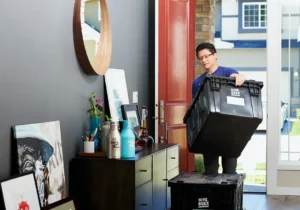
Using moving straps offers several benefits, including:
To ensure you use the straps effectively and safely, follow these essential tips:
Before using your moving straps, it’s crucial to read and understand the instructions that come with them. Each brand may have specific guidelines and recommendations for proper usage, so familiarize yourself with the instructions to avoid any potential injuries.
Before attempting to lift any heavy objects with moving straps, clear the pathway from your starting point to your destination. Remove any obstacles, such as rugs or toys, that could pose a tripping hazard. Additionally, measure doorways, hallways, and staircases to ensure the item you’re moving will fit through without any issues.
Wearing appropriate clothing and footwear is essential when using moving straps. Opt for sturdy, non-slip shoes to maintain grip and balance while lifting. Avoid open-toed shoes or high heels, as they can increase the risk of accidents. Additionally, wear comfortable and non-constricting clothing to ensure freedom of movement.
Typically requires two people. Find a reliable moving partner who can assist you in lifting and maneuvering heavy objects. Working as a team will ensure better control and reduce the risk of accidents.
Depending on the type of moving straps you have, determine the appropriate placement for optimal lifting. Shoulder straps should be positioned over your shoulders, with the lifting strap centered in front of your body. Forearm straps should be positioned around your forearms, with the lifting loops securely fastened.
To prepare the object for lifting, place the straps on the ground in front of the item. With your partner’s help, tilt the object back gently to create enough space to slide the straps underneath. Ensure that the straps are centred and properly aligned with the object.
When lifting the object using straps, it’s crucial to use proper lifting techniques to prevent injuries. Bend your knees, keep your back straight, and lift with your legs rather than your back. Coordinate with your partner to lift the object simultaneously and maintain clear communication throughout the lifting process.
Once you have lifted the object using the moving straps, move slowly and carefully to your desired destination. Take small steps and communicate with your partner to ensure synchronized movement. If either of you needs a break or adjustment, lower the object safely and resume when ready.
When you reach your destination, lower the object slowly and with control. Bend your knees and keep your back straight to reduce the risk of strain or injury. Remove the straps carefully once the object is safely on the ground.
Yes, moving straps can significantly assist in lifting and moving heavy objects when used correctly. They help distribute the weight, reducing strain on your body and making the process more manageable.
Some moving straps are designed for one-person use, while others require two people. Check the specifications of your specific set of moving straps to determine if they can be used individually.
Moving straps can be used for a wide range of heavy objects, including bookcases, couches, desks, tables, and more. They are versatile tools that can make the moving process easier and more efficient.
The weight capacity of moving straps can vary depending on the specific style, model, and brand. Generally, can support anywhere from 400 to 650 pounds, but it’s essential to check the manufacturer’s guidelines for the specific straps you are using.
Moving cost straps are widely available for purchase at home improvement stores, such as Lowe’s and The Home Depot. You can also find them online through various retailers.
Using moving straps can make a significant difference in the ease and safety of lifting and moving heavy objects. By following the tips and techniques outlined in this guide, you can effectively use to reduce strain on your body and prevent injuries. Remember to always prioritize safety, communicate with your moving partner, and use proper lifting techniques. With the help of straps, your next move or furniture moving straps rearrangement project will be a breeze.